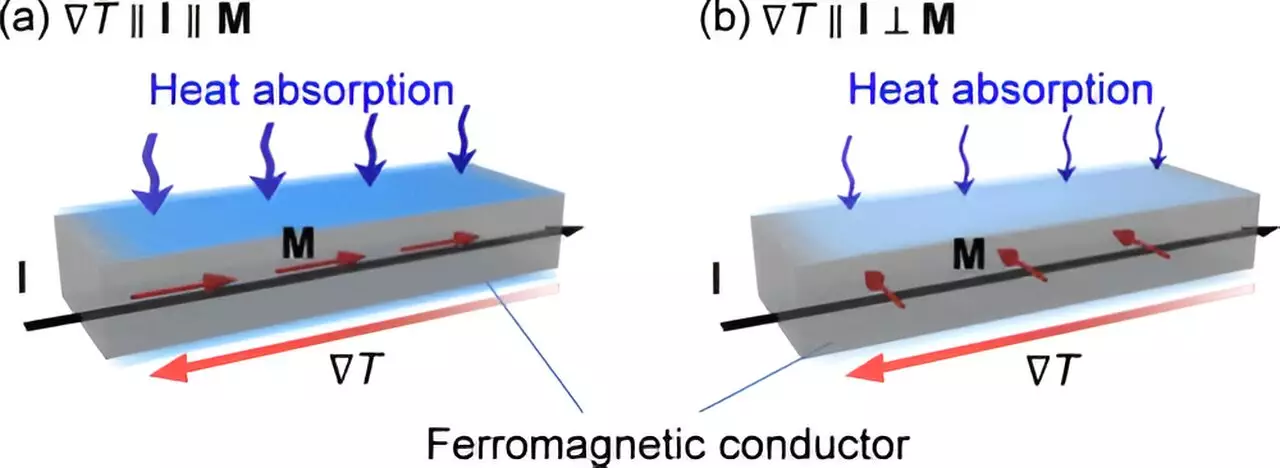The National Institute for Materials Science (NIMS) has made a significant breakthrough in the field of thermoelectrics and spintronics by directly observing the “anisotropic magneto-Thomson effect.” This groundbreaking phenomenon demonstrates the anisotropic changes in heat absorption and release proportional to temperature difference and charge current, depending on the magnetization direction in magnetic materials. Published in Physical Review Letters, this research not only contributes to the development of basic physics and materials science but also holds great promise in advancing thermal energy control with magnetism.
The Thomson effect, along with the Seebeck and Peltier effects, is a fundamental thermoelectric effect in metals and semiconductors, serving as the driving principle for thermoelectric conversion technologies. While the impact of magnetism on the Seebeck and Peltier effects has been extensively studied, the influence on the Thomson effect has remained unclear. This knowledge gap exists because the thermoelectric conversion of the Thomson effect is generally small, and robust measurement and quantitative estimation methods have yet to be established.
Although NIMS reported in 2020 an experimental result showing the magneto-Thomson effect in nonmagnetic conductors, the observation of the anisotropic magneto-Thomson effect in magnetic materials has never been achieved until now. Building on their previous work, the NIMS research team successfully observed this unexplored phenomenon through more precise thermal measurements.
To directly observe the anisotropic magneto-Thomson effect in magnetic materials, the NIMS team utilized a thermal measurement technique called lock-in thermography. By applying a charge current to a ferromagnetic alloy (Ni95Pt5) and creating a temperature difference, they measured the temperature distribution with precision. Through this method, the researchers verified how the Thomson effect changes based on the magnetization direction.
The NIMS research team discovered that the amount of heat absorption or heat release in the Ni95Pt5 alloy is greater when the temperature gradient and charge current align with the magnetization direction. In other words, heat absorption/release is more pronounced when parallel to the magnetization compared to when perpendicular. This finding aligns with observed behavior in the Seebeck and Peltier effects in magnetic materials, further validating the accuracy and significance of the anisotropic magneto-Thomson effect.
This groundbreaking research has not only shed light on the fundamental properties of the anisotropic magneto-Thomson effect but has also established techniques for its quantitative measurement. Moving forward, the NIMS researchers aim to explore the physics, materials, and functionalities of this effect to uncover new phenomena resulting from the interaction of heat, electricity, and magnetism. In addition, they envision utilizing these findings in the development of thermal management technologies that enhance efficiency and energy conservation in electronic devices.
This remarkable project was carried out by a team of esteemed researchers, including Rajkumar Modak (Special Researcher, Research Center for Magnetic and Spintronic Materials CMSM), Takamasa Hirai (Researcher, CMSM, NIMS), Seiji Mitani (Director, CMSM, NIMS), and Ken-ichi Uchida (Distinguished Group Leader, CMSM, NIMS).
The discovery of the anisotropic magneto-Thomson effect in magnetic materials marks a significant milestone in the fields of thermoelectrics and spintronics. This breakthrough not only deepens our understanding of fundamental physics but also paves the way for the development of innovative thermal management technologies. As future research unfolds, we anticipate further exciting advancements that harness the power of heat, electricity, and magnetism for the benefit of technological progress and energy conservation.



Leave a Reply